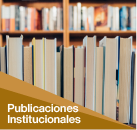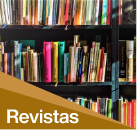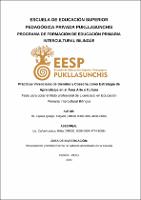Mostrar el registro sencillo del ítem
Prácticas Vivenciales de Siembra y Cosecha como Estrategia de Aprendizaje en el Área Arte y Cultura
| dc.contributor.advisor | Cañari Loaiza, Hilda | |
| dc.contributor.author | Zapata Quispe, Edgard | es_PE |
| dc.date.accessioned | 2025-06-01T23:37:18Z | |
| dc.date.available | 2025-06-01T23:37:18Z | |
| dc.date.issued | 2024-01-24 | |
| dc.identifier.uri | http://repositorio.pukllasunchis.org/xmlui/handle/PUK/107 | |
| dc.description.abstract | El presente trabajo de investigación se realizó con la finalidad de recoger los testimonios y conocimientos locales sobre la siembra y cosecha de maíz para incorporarlos en el proceso de aprendizaje de los niños. Esta investigación se realizó en las diferentes etapas de trabajo agrícola durante el presente año, gracias al aporte y la colaboración de los sabios y sabias de la comunidad. Esta investigación tiene carácter narrativo y un enfoque cualitativo, su objetivo es mostrar la importancia de los saberes y conocimientos en la actividad de siembra y cosecha del maíz, para tal efecto, me propuse visibilizar la importancia de los conocimientos y vivencias dentro de la actividad agrícola para y afirmar la identidad cultural en los estudiantes del nivel primario especialmente de las zonas rurales como parte de su educación y para la vida. Se registró y recogió testimonios de diversas personas y se organizó la información de cada temporada agrícola. Las conclusiones a las que se pudo llegar son, el registrar las actividades de la siembra y cosecha del maíz en el calendario agrofestivo comunal considerando tres etapas: de siembra, de maduración, y de cosecha, los cuales han permitido identificar temáticas pertinentes en una propuesta de planificación anual. Se ha elaborado un registro de la variabilidad de los maíces en tres grupos como, maíces de maduración tardía o hatun muhu, maíces de maduración intermedia, que también se conoce como chawpi muhu, y maíces de maduración temprana, o chawcha muhu, estas variedades se siembran en espacios pequeños y en diversidad de colores de semillas, estas dos últimas mantienen la mayor cantidad de variabilidad y riqueza de colores. A partir de la sistematización de los testimonios recogidos en el calendario, se proponen proyectos de trabajo educativo para la incorporación de los conocimientos ancestrales en el aprendizaje de los niños y niñas en el área de arte y cultura con la finalidad de afirmar su identidad y revalorización de sus conocimientos. | es_PE |
| dc.description.abstract | Abstract The present research work was carried out with the purpose of collecting testimonies and local knowledge about the planting and harvesting of corn to incorporate them into the learning process of children. This research was carried out in the different stages of agricultural work during this year, thanks to the contribution and collaboration of the wise men and women of the community. This research has a narrative character and an eminently qualitative approach, its objective is to show the importance of knowledge and knowledge in the activity of planting and harvesting corn, for this purpose, I set out to make visible the importance of knowledge and experiences within the agricultural activity for and affirm cultural identity in primary level students especially from rural areas as part of their education and for life. For this research, testimonies from various people were recorded and collected, and the information was organized according to each agricultural season. The conclusions that could be reached are, recording the activities of planting and harvesting corn in the communal agro-festive calendar considering three stages: planting, maturation, and harvest, which have allowed the identification of relevant themes in a proposal. annual planning. As part of the record of knowledge, a record of maize variability has been prepared in three groups, such as late maturing maize or hatun muhu, intermediate maturing maize, which is also known as chawpi muhu, and early maturing maize, or chawcha muhu, these varieties are sown in small spaces and in a diversity of seed colors. These last two maintain the greatest amount of variability and richness of colors. As noted, from the systematization of the testimonies collected in the calendar, educational work projects are proposed for the incorporation of ancestral knowledge in the learning of boys and girls in the area of art and culture in order to affirm their identity and revaluation of their knowledge. | es_PE |
| dc.description.abstract | Pisi rimayllapi willasayki Kay k’uskiy llamk’asqaqa saramama uywaymanta, tarpuypi, huñuypi ima ruraykunata, Arte y Cultura nisqa yachana ukhunta, runa kayninkuta, kawsayninkuta ima mat’iparinapaq. Kay rurayqa qispirimun watantin chakra llamk’ay ukhupi kawsayninchikmanta, yachaqkunapa, tayta mamakunapa ima yanapayninwan. Kay k’uskiyqa rurakuchkan yachayninchikkunata riqsirichinapaq, hinaspapas kachkallantaq imaynam sara llamk’ay ukhupi rurayninchikkuna, yachayninchikkuna ima riqsirichinanchikpaq. Chay yachaykunamantapacha imaymana llank’ariykunata, yachachiykunata ima, primaria nisqa yachaywasi ukhupi wawakunapa kawsayninku, runa kayninku ima mat’iparisqa kananpaq, aswantaqa karu ayllunchikkunapi tarikuq yachaywasikunapaq. Kay llank’asqa ukhupiqa lliw yachaykuna, willakuykuna ima huñusqamantapacha, allin awasqam tarikun, t’aqarikuntaqmi kimsa p’akiman, sapanka p’aki ukhupin tarikullantaq imaymana yachaykuna, kawsaykuna, riqsiykuna ima, chay kimsantin p’akikunam kachkam, tarpuy killa, puquy killa, mikhuy huñuna killa ima sutichasqa. Awarikullantaqmi sara tarpusqamanta kimsa t’aqapi, chay t’aqakunam kachkam, hatun muhu, chawpi muhu, huch’uy muhu nispa sutichasqakuna, rurakullantaq ima allpakunapichus kay mikhuykuna wiñan chaytapas, kay iskaynin qhipakaqkunapin achka limmp’iyuq saramamakuna tarikun. Kay yachaykunamanta willaykuykuna awasqamantapacha qhawarikun huk proyecto de aprendizaje nisqata, yachaywasikunapi Arte y Cultura nisqa ukhunta llamk’arikunampaq, wawakunaq kawsayninku, yachayninku ima mat’iparinapaq, chaypaqmi akllarikun wakin yachaykuna, willakuykuna ima kay calendario agrofetivo nisqa ukhumanta, sapanka wawakuna yuyaykuspa kawsayninkuta mat’iparinankupaq, uywanankupaq ima, chaymantapacha yuyayninkuta runakayninkuta ima saphincharispa astawan sunqunku ukhupi allin mat’iparinankupaq. Chanin rimaykuna: Tarpuy Ukhupi Ruraykuna, Mihuy Huñuy Ukhupi Ruraykuna, Yachayninchis Mat’ipanapaq Llamk’aykuna, Wata Muyuypi Kawsayninchiskuna. | es_PE |
| dc.format | application/pdf | es_PE |
| dc.language.iso | spa | es_PE |
| dc.publisher | Asociación Pukllasunchis | es_PE |
| dc.rights | info:eu-repo/semantics/openAccess | es_PE |
| dc.rights.uri | https://creativecommons.org/licenses/by-nc-sa/4.0/ | es_PE |
| dc.subject | estrategia de aprendizaje | es_PE |
| dc.subject | calendario agrofestivo comunal | es_PE |
| dc.subject | Prácticas Vivenciales de Siembra y Cosecha | es_PE |
| dc.title | Prácticas Vivenciales de Siembra y Cosecha como Estrategia de Aprendizaje en el Área Arte y Cultura | es_PE |
| dc.type | info:eu-repo/semantics/bachelorThesis | es_PE |
| dc.type.version | info:eu-repo/semantics/publishedVersion | es_PE |
| dc.publisher.country | PE | es_PE |
| dc.subject.ocde | https://purl.org/pe-repo/ocde/ford#5.03.01 | es_PE |
| renati.advisor.orcid | https://orcid.org/0009-0004-4774-8056 | es_PE |
| renati.type | https://purl.org/pe-repo/renati/type#tesis | es_PE |
| renati.level | https://purl.org/pe-repo/renati/nivel#tituloProfesional | es_PE |
| renati.discipline | 112096 | es_PE |
| renati.juror | Eguiluz Duffy, Cecilia María | es_PE |
| renati.juror | Guevara Zambrano, Carlos Andrés | es_PE |
| renati.juror | Santisteban Matto, Ruth Dina | es_PE |
| renati.juror | Sullca Tito, Hernan | es_PE |
| thesis.degree.name | Licenciado en Educación Primaria Intercultural Bilingüe | es_PE |
| thesis.degree.discipline | Educación Primaria Intercultural Bilingüe | es_PE |
| thesis.degree.grantor | Escuela de Educación Superior Pedagógica Privada Pukllasunchis | es_PE |
| renati.author.dni | 24493843 | |
| renati.advisor.dni | 23963630 |







